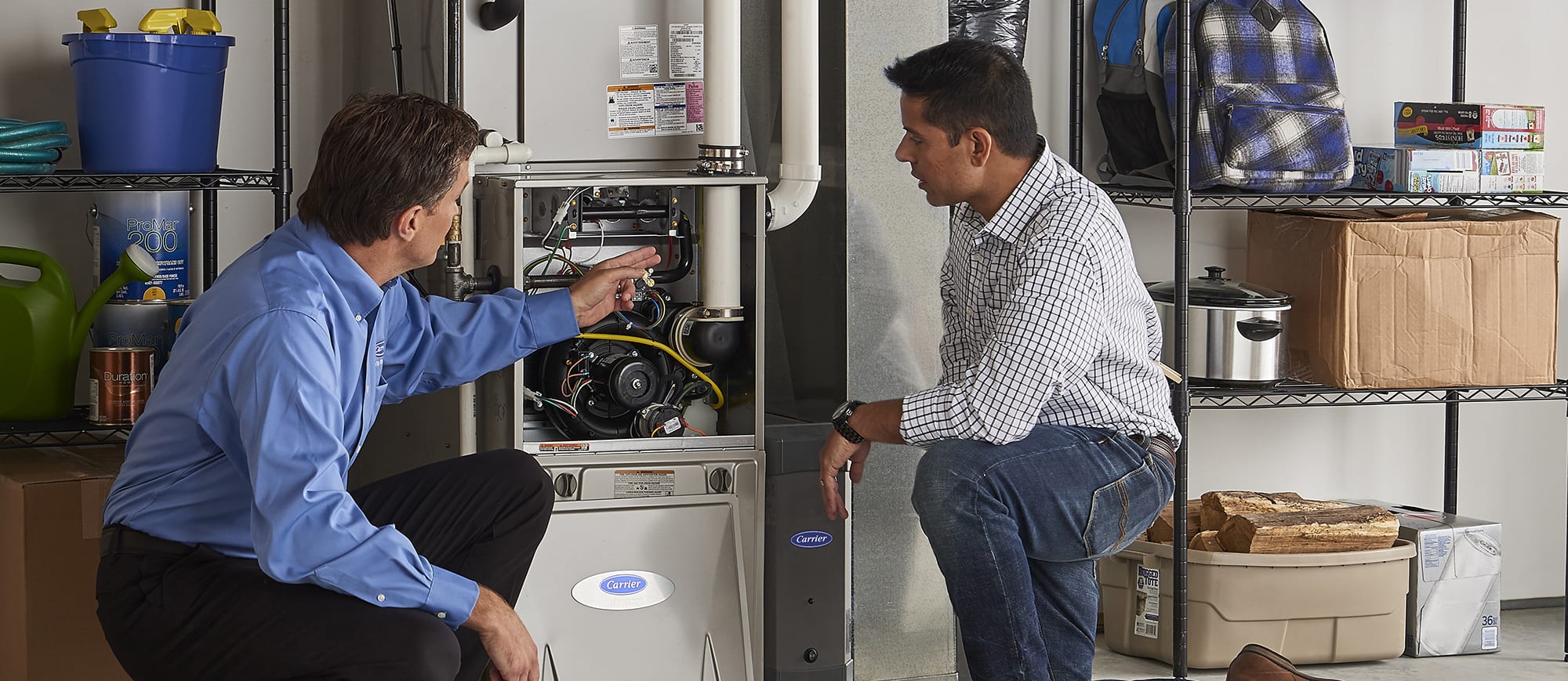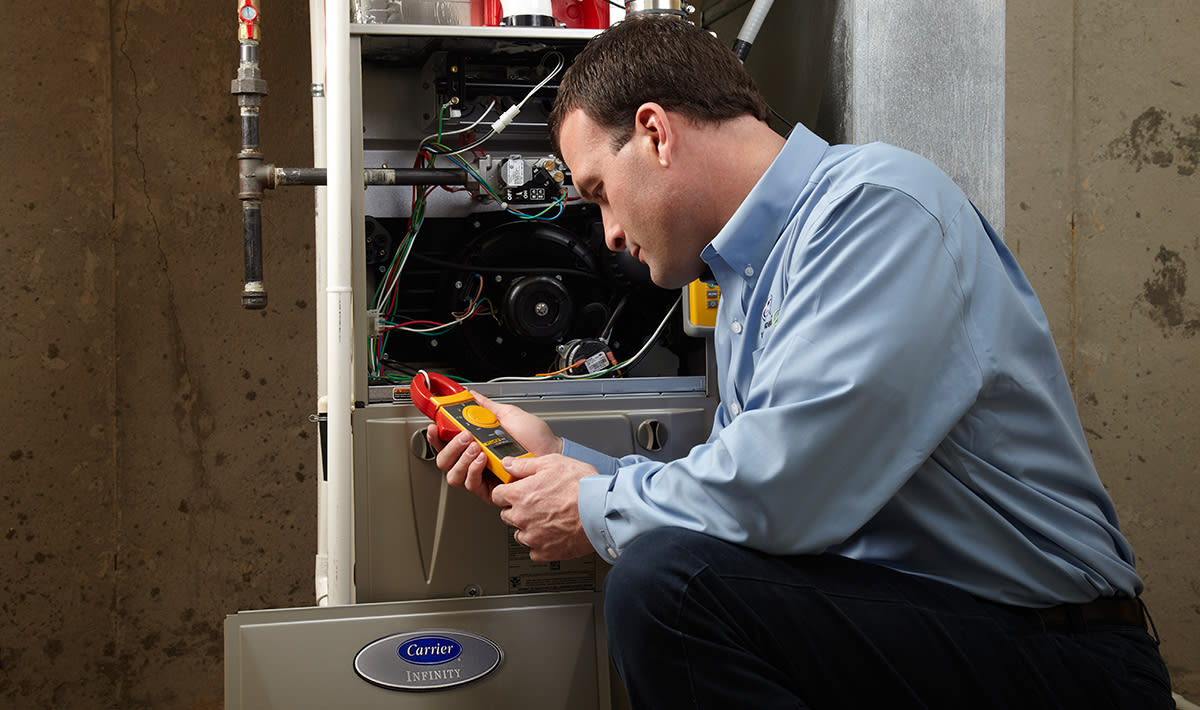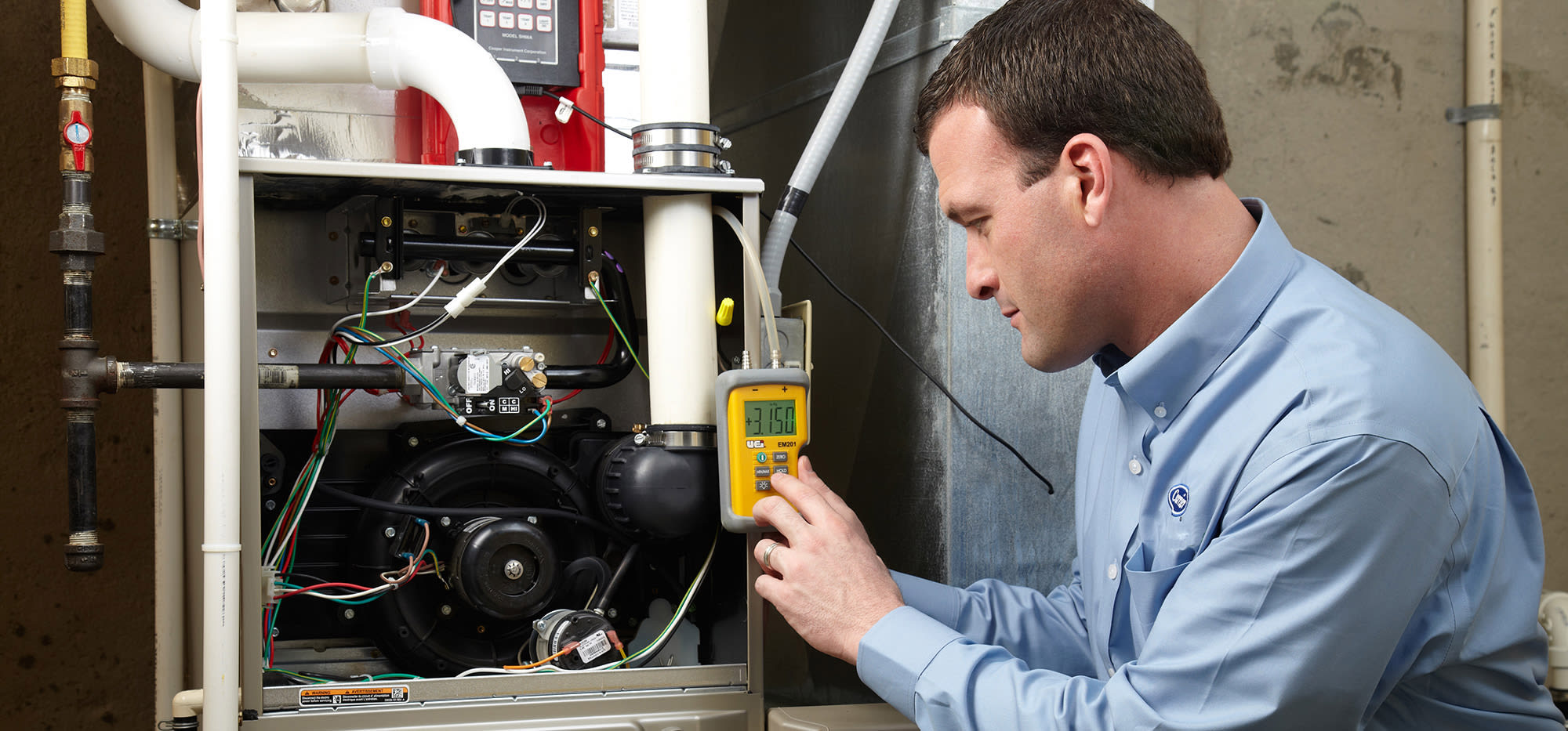How Does a Gas Furnace Work?
If you are like most Americans, you probably heat your home with a natural gas heating system – a gas furnace. So, how does a gas furnace work? A gas furnace burns natural gas or propane to create heat. Air from your home enters the furnace, absorbs the heat, and circulates back to your home’s living spaces to provide warm, cozy comfort. Because it has a centralized air circulating fan, a furnace is often paired with an air conditioning unit to help provide cooling in the summer months.

Knowing the basics of how a gas furnace works and being able to identify the parts of a gas furnace can be helpful when it comes to DIY maintenance and troubleshooting. It will also help you better communicate with a furnace technician if you ever need to make an appointment for system diagnosis or gas furnace repair. And when you do, your local Carrier dealer can be a great resource for understanding how a furnace works for your family’s comfort.
Steps of How a Gas Furnace Works
Here’s a more detailed look at how a gas furnace works:
- When the temperature in your home drops below the setting on your thermostat, the furnace starts its heating cycle.
- Natural gas or propane is piped from outside the home into your furnace. A special valve inside the furnace directs the flow of gas into a burner (like the ones on a gas grill) where it is ignited to start a controlled flame.
- Heat from the burning fuel enters a narrow chamber called a heat exchanger. Cold air from your home flows across the outer surface of the heat exchanger and absorbs the heat.
- The resulting warm air is circulated out to your living spaces by the furnace blower through a series of “supply” ducts inside your walls, ceilings or floors.
- The heating process continues as cooler indoor air re-circulates back to the furnace through a different series of “return air” ducts.
- The thermostat shuts off the flow of warm air once it detects that the temperature has reached the set level. When the indoor temperature falls below the thermostat's setting, the furnace turns back on and starts heating your home again.
Parts of a Gas Furnace
While furnace operation is a simple concept, today’s gas furnaces can include sophisticated technology and can have quite a few parts. Here's a closer look at the major parts of a furnace:
- Thermostat – While it’s not one of the parts of a furnace found inside the unit’s cabinet, the thermostat is an important part of your furnace system. It controls furnace operation, and it's where you set the temperature you want for your home.
- Burners – The furnace burner is typically a hollow tube with several small holes. Natural gas or propane flows through the holes so it can be ignited to create a controlled flame.
- Ignitor/ignition switch – Today’s furnaces typically include some sort of spark or hot surface ignitor. Older models used a pilot light ignition which was less reliable and used more gas.
- Control board – The control board coordinates furnace operation. Higher end furnace control boards monitor conditions, maintain operation history and manage furnace usage for higher energy efficiency and comfort.
- Combustion chamber – The combustion chamber is the area in your furnace where gas is burned to create heat. It’s where you’ll find the burner, ignitor and flame sensor.
- Blower – Forced air gas furnaces include a blower that circulates air through your home, into your furnace, and back out to your home. Inside the blower’s housing is a blower motor that powers the fan, and the blower fan that moves the air.
- Heat exchanger – The heat exchanger in a furnace is typically either hollow metal tubing or thin metal sheets (usually aluminum) that are pressed together to create a channel for hot flue gases. Air passing over the outside of the heat exchanger absorbs heat from its surface and goes out to your home, while flue gases, including carbon monoxide, are vented outside.
- Gas valve – The gas valve receives gas from an external source and controls the flow of gas within the furnace.
- Air filter -- Most furnaces include some type of air filter to help keep indoor air cleaner, furnace components cleaner, and the system running at its best.
If you are having issues with any parts of a gas furnace, contact a local Carrier dealer. Your local dealer is an expert on gas furnace operation, maintenance and repair, and can provide recommendations on solutions for your heating system issues.

Frequently Asked Questions
Still want to know more about gas furnaces? Here are some answers to frequently asked questions:
- Does a gas furnace need electricity to run? Yes. A gas furnace requires electricity to operate the blower fan, inducer fan, ignitor, the electronic control board, etc.
- What are the different types of gas furnaces? Gas furnaces come in many varieties, from the very simple to the very complex.
- Natural gas – uses natural gas from your local utility
- Propane – uses propane from a tank outside your home
- Conventional gas furnaces – typically meet minimum efficiency standards (80% AFUE) and require a traditional flue vent, and have an “open” combustion chamber that draws air from within the home
- High-efficiency gas furnaces – typically include a sealed combustion system that draws air from outside for combustion, primary and secondary heat exchangers, and vents through PVC pipe. These furnaces will have an efficiency of 90% AFUE or greater
- Non-condensing furnaces – furnaces with only one heat exchanger
- Condensing furnaces – higher efficiency (90% AFUE or more) furnaces with a primary heat exchanger and a secondary (condensing) heat exchanger
- Modulating gas furnaces – furnaces with the ability to adjust heating capacity up or down in stages as needed to match changing conditions
While the premise of gas furnace operation is simple – burn gas to create heated air that circulates into your home – the entire process has several steps. And, today’s furnaces can include “smart” controls, variable fan speeds and multiple heating stages for improved comfort and efficiency. If you are considering a new heating system, you’ll also want to research the cost of a gas furnace and how to replace a gas furnace. For answers from a gas furnace expert, consider contacting your trusted local Carrier dealer.


